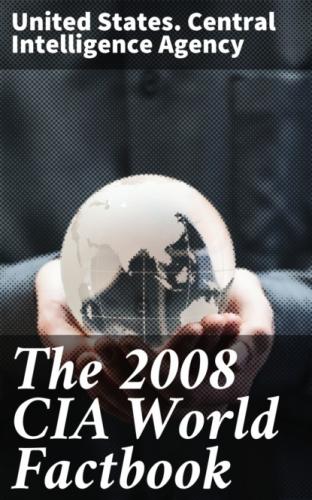Angola's high growth rate is driven by its oil sector, with record oil prices and rising petroleum production. Oil production and its supporting activities contribute about 85% of GDP. Increased oil production supported growth averaging more than 15% per year from 2004 to 2007. A postwar reconstruction boom and resettlement of displaced persons has led to high rates of growth in construction and agriculture as well. Much of the country's infrastructure is still damaged or undeveloped from the 27-year-long civil war. Remnants of the conflict such as widespread land mines still mar the countryside even though an apparently durable peace was established after the death of rebel leader Jonas SAVIMBI in February 2002. Subsistence agriculture provides the main livelihood for most of the people, but half of the country's food must still be imported. In 2005, the government started using a $2 billion line of credit, since increased to $7 billion, from China to rebuild Angola's public infrastructure, and several large-scale projects were completed in 2006. Angola also has large credit lines from Brazil, Portugal, Germany, Spain, and the EU. The central bank in 2003 implemented an exchange rate stabilization program using foreign exchange reserves to buy kwanzas out of circulation. This policy became more sustainable in 2005 because of strong oil export earnings; it has significantly reduced inflation. Although consumer inflation declined from 325% in 2000 to under 13% in 2007, the stabilization policy has put pressure on international net liquidity. Angola became a member of OPEC in late 2006 and in late 2007 was assigned a production quota of 1.9 million barrels a day, somewhat less than the 2–2.5 million bbl Angola's government had wanted. To fully take advantage of its rich national resources - gold, diamonds, extensive forests, Atlantic fisheries, and large oil deposits - Angola will need to implement government reforms, increase transparency, and reduce corruption. The government has rejected a formal IMF monitored program, although it continues Article IV consultations and ad hoc cooperation. Corruption, especially in the extractive sectors, and the negative effects of large inflows of foreign exchange, are major challenges facing Angola.
GDP (purchasing power parity):
$95.46 billion (2007 est.)
GDP (official exchange rate):
$61.36 billion (2007 est.)
GDP - real growth rate:
16.7% (2007 est.)
GDP - per capita (PPP):
$7,800 (2007 est.)
GDP - composition by sector:
agriculture: 9.5% industry: 65.8% services: 24.6% (2007 est.)
Labor force:
7.148 million (2007 est.)
Labor force - by occupation:
agriculture: 85% industry and services: 15% (2003 est.)
Unemployment rate:
extensive unemployment and underemployment affecting more than half the population (2001 est.)
Population below poverty line:
70% (2003 est.)
Household income or consumption by percentage share:
lowest 10%: NA% highest 10%: NA%
Investment (gross fixed):
9.1% of GDP (2007 est.)
Budget:
revenues: $20.18 billion expenditures: $15.53 billion (2007 est.)
Fiscal year:
calendar year
Public debt:
12% of GDP (2007 est.)
Inflation rate (consumer prices):
12.2% (2007 est.)
Central bank discount rate:
19.57% (31 December 2007)
Commercial bank prime lending rate:
17.7% (31 December 2007)
Stock of money:
$4.153 billion (31 December 2007)
Stock of quasi money:
$7.216 billion (31 December 2007)
Stock of domestic credit:
$1.385 billion (31 December 2007)
Agriculture - products:
bananas, sugarcane, coffee, sisal, corn, cotton, manioc (tapioca), tobacco, vegetables, plantains; livestock; forest products; fish
Industries:
petroleum; diamonds, iron ore, phosphates, feldspar, bauxite, uranium, and gold; cement; basic metal products; fish processing; food processing, brewing, tobacco products, sugar; textiles; ship repair
Industrial production growth rate:
23.9% (2007 est.)
Electricity - production:
3.513 billion kWh (2006 est.)
Electricity - consumption:
3.084 billion kWh (2006 est.)
Electricity - exports:
0 kWh (2007 est.)
Electricity - imports:
0 kWh (2007 est.)
Electricity - production by source:
fossil fuel: 36.4% hydro: 63.6% nuclear: 0% other: 0% (2001)
Oil - production:
1.91 million bbl/day (2008 est.)
Oil - consumption:
55,640 bbl/day (2006 est.)
Oil - exports:
1.23 million bbl/day (2005)
Oil - imports:
19,550 bbl/day (2005)
Oil - proved reserves:
9.035 billion bbl (1 January 2008 est.)
Natural gas - production:
680 million cu m (2006 est.)
Natural gas - consumption:
680 million cu m (2006 est.)
Natural gas - exports:
0 cu m (2007 est.)
Natural gas - imports:
0 cu m (2007 est.)
Natural gas - proved reserves:
269.8 billion cu m (1 January 2008 est.)
Current account balance:
$13.58 billion (2007 est.)
Exports:
$45.03 billion f.o.b. (2007 est.)
Exports - commodities:
crude oil, diamonds, refined petroleum products, gas, coffee, sisal, fish and fish products, timber, cotton
Exports - partners:
US 32.1%, China 32%, France 5.9%, Taiwan 5.3%, South Africa 4.5% (2007)
Imports:
$12.29 billion f.o.b. (2007 est.)
Imports - commodities:
machinery and electrical equipment, vehicles and spare parts; medicines, food, textiles, military goods
Imports - partners:
Portugal 19.7%, US 10.9%, China 10.5%, Brazil 10.3%, South Africa 6.6%, France 6.3%, UK 4.6%, Germany 4.3% (2007)
Economic aid - recipient:
$441.8 million (2005)
Reserves of foreign exchange and gold:
